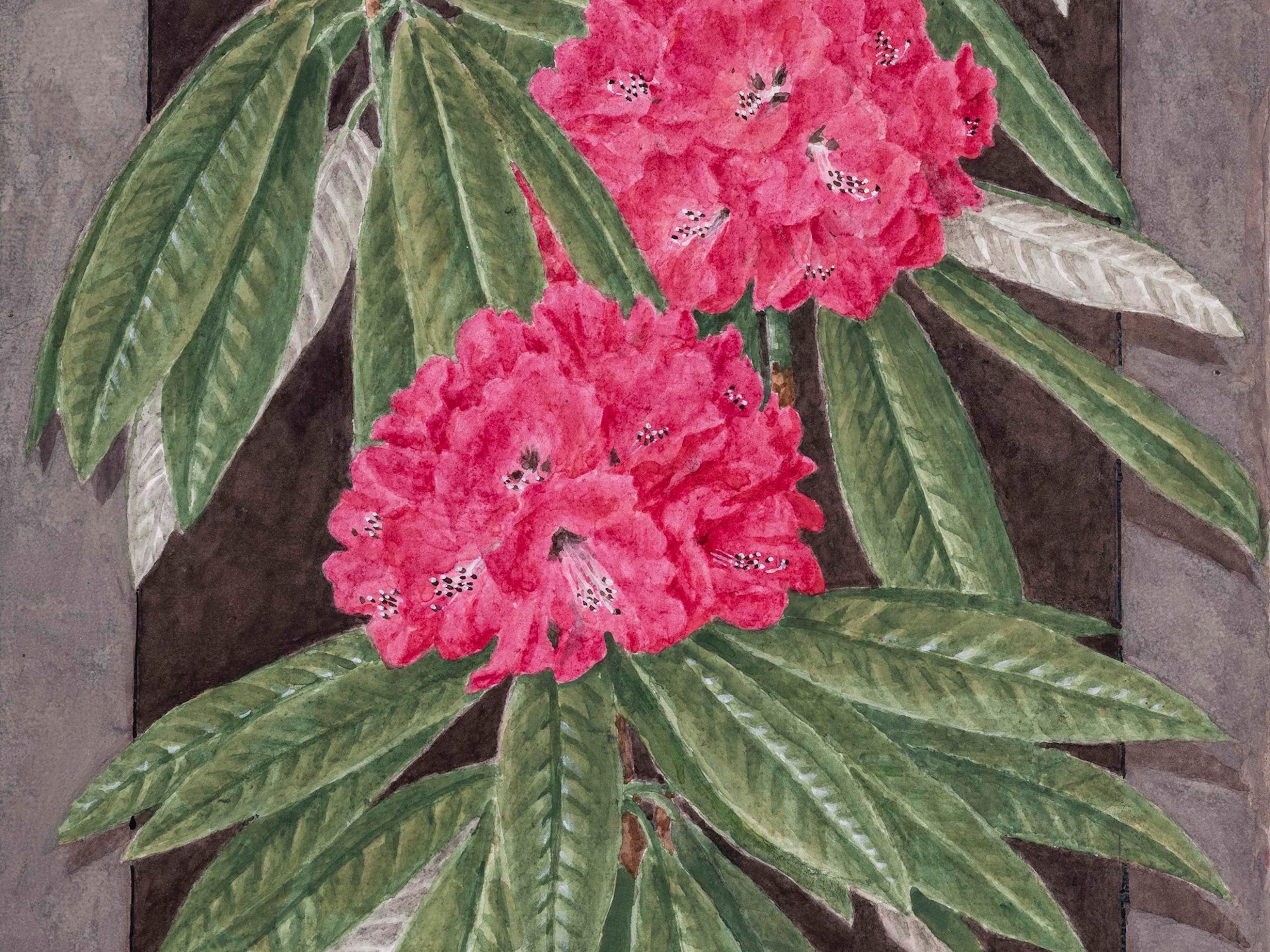The life and works of a great unsung British polymath of the 19th century is explored through an insightful new exhibition this Spring.
The name of Sir Herbert Maxwell, Knight of the Order of the Thistle, architect of landmark wildlife legislation and lauded by Sir Andrew Carnegie as “…the one man in Europe whom (he) wished to know!”, is all but unknown today. However, a new display at Logan Botanic Garden in Dumfries & Galloway brings fresh insight and understanding into the career of this exceptional man.
Richard Baines, Curator of Logan Botanic Garden said: “Sir Herbert was known as a politician and junior Minister, writer, author, sportsman and painter, but he also played a pioneering role in Scottish horticulture.
“He was fearless in experimenting with new species of plants and was one of the first people to introduce specific rhododendron species to Dumfries & Galloway. He even planted a forest of 200 Araucaria araucana or monkey puzzle trees on his land.
“However, he wasn’t content with just developing a wonderful and exotic garden. At the venerable age of 70, he took up painting and became an acclaimed botanical artist, painting many of the plants that he had grown from seed. We are delighted to show his works in our exhibition.”
A descendant of the ancient Clan Maxwell, Sir Herbert (1845-1937) served as the Member of Parliament for Wigtownshire from 1880 to 1906. He had a great interest in wildlife and used his position as an MP to introduce a Wild Birds Protection Act and an Act to establish a close time for salmon and trout in Scottish rivers. Both Acts were forward-thinking in helping to protect Scottish nature.
Esteemed as a ground-breaking horticulturist, Sir Herbert developed his garden at Monreith House, Port William, with seeds collected from around the world, but particularly from China. The warm, sheltered location enabled him to grow a range of plants that were new and exotic for the time, and which until then had been largely unknown in the south-west of Scotland. His books on gardens and flora, including Scottish Gardens (1908) and Flowers, a Garden Notebook were highly sought after, with the latter including his own beautiful illustrations.
His efforts in horticulture were recognised by the Royal Horticultural Society (RHS) and he was awarded their Victoria Medal of Honour in 1917.
The display of over 40 images shows some of the species he introduced to his Monreith Garden: magnificent rhododendrons and magnolias as well as buddleja, primulas and poppies.
Logan Botanic Garden and the exhibition will open to the public on Tuesday 1 March. The exhibition will end on 30 April 2022 with hopes that it may tour to the other regional gardens of the Royal Botanic Garden Edinburgh (Benmore in Argyll and Dawyck in the Borders).
Images are exhibited with the kind permission of the late Sir Michael Maxwell Bt.
ENDS
For further information, interviews or images, please respond to this email or contact Suzie Huggins on 07385 491 460 or Shauna Hay on 07824 529 028.
EDITOR’S NOTES:
Sir Herbert E. Maxwell Bt., KT., PC., FRS. (1845-1937) was a remarkable character and one of the most versatile men of his time, having been a politician, author, artist, scientist and sportsman. He wrote history, fiction, biography, essays and criticism contributing largely to archaeology, philology and natural history.
Born in Edinburgh in 1845, he was the 7th Baronet from the Monreith branch of an old Scottish Borders family. Educated at schools in Brighton, Leamington and Eton, he studied at Oxford for a year before returning home and becoming a junior officer in the Ayrshire Militia, serving there for twenty-one years.
In 1880, he entered Parliament as the MP for Galloway, was promoted to the post of junior Minister of the Treasury and served as assistant whip.
He wrote on an eclectic range of subjects including parliamentary matters for the local papers, a biography of the Duke of Wellington and Fishing at Home and Abroad. He has about sixty works to his credit.
His talents were recognised by his contemporaries, and he held many offices including Chairman of the Trustees of the National Library of Scotland and President of the Society of Antiquaries of Scotland.
He was elected a member of the Royal Society in 1898, made a Privy Councillor in 1897 and Knight of the Order of the Thistle in 1933.
Located on the south-western tip of Scotland, Logan Botanic Garden enjoys an almost subtropical climate and is known as Scotland’s most exotic Garden. The Garden’s avenues and borders feature a spectacular and colourful array of half-hardy perennials. Warmed by the Gulf Stream, plants from Australia, New Zealand, South and Central Americia and South Africa thrive in the mild climate.
The Royal Botanic Garden Edinburgh (RBGE) is a leading international research organisation delivering knowledge, education, and plant conservation action around the world. In Scotland, its four Gardens at Edinburgh, Benmore, Dawyck and Logan attract more than a million visitors each year. It operates as a Non Departmental Public Body established under the National Heritage (Scotland) Act 1985, principally funded by the Scottish Government. It is also a registered charity, managed by a Board of Trustees appointed by Ministers. Its mission is “To explore, conserve and explain the world of plants for a better future.”

